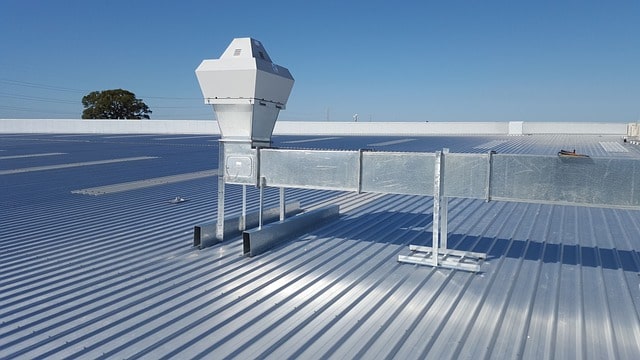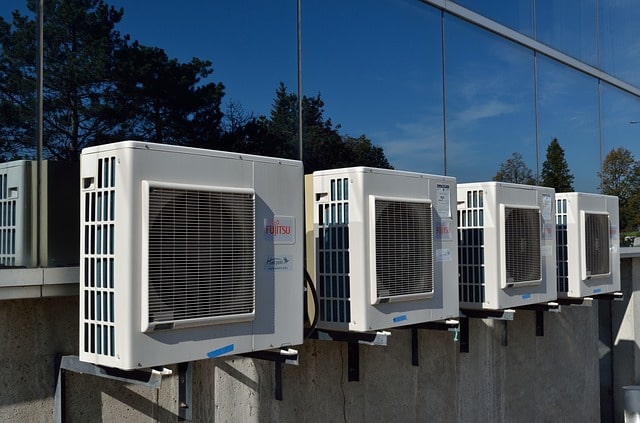The Internet of Things (IoT) has touched just about every facet of our lives. But how is it affecting the way we do business?
For one, it’s enabling companies to become more flexible. This is all thanks to software, online platforms, and interconnectivity like we’ve never seen before. It’s rapidly changing all industries, including commercial HVAC. If you own a heating and cooling company or manufacture HVAC equipment, then you may be wondering how to keep up with this ever-changing landscape.

So, let’s take a look at five emerging trends that are reshaping your field:
Keep reading to learn more about how these trends are transforming the future of commercial HVAC.
The way buildings are constructed today is a bit different. Many contractors and architects are designing with “green” thinking in mind, which has led to an influx in the installation of smart meters, thermostats, and sensors to help ease power costs. Not only are building owners able to control temperatures, but they’re able to control the humidity levels and airflow as well.
They’re doing this all from their desktop, tablet, or smartphone. How is this possible? Through robust Wi-Fi-connected software. Now, landlords, owners, property managers, and maintenance techs can easily monitor and control the atmosphere of a building.
To take things even further, the software-enabled HVAC systems are collecting data and compiling it into reports to identify usage trends, system status, and past performance, which can be used to inform preventive maintenance and identify the source when something malfunctions for faster repairs. Durable nameplates allow technicians to quickly identify components, specifications, source parts for repairs and scan a barcode to document maintenance and repair activities. Some modern software-enabled HVAC systems can self-diagnose, allowing HVAC techs to quickly repair issues to minimize downtime.
Green initiatives are big business today. Everyone’s looking to save money (and the world). So, there’s an uptick in the trend for environmentally-friendly HVAC units, which includes the use of solar panels and wind turbines to reduce energy costs.
The use of geothermal heating and cooling methods is also on the rise, which eliminates the need for petroleum-based electricity. Instead, these heat pumps use the ground and water sources, such as ponds, to generate energy to heat and cool buildings. Some buildings incorporate a mix of gas and solar, allowing owners to switch between the two seamlessly to control power costs. There are already thermally-driven ACs in development.
Chromasun, a manufacturer in Australia, is developing chillers that use gas and solar panels to operate and are very energy efficient. Since they have few moving parts, there’s less chance of breakdowns.

The days of operating your HVAC company manually are over (or at least, they should be). There are various software tools and platforms HVAC companies are using to enhance their sales, customer service, and technical support. Other systems enhance invoicing, estimating, payments, routing, and communications with clients.
Some are adopting online project management tools, such as Trello and Google Suite, to create checklists and assign jobs to workers. When equipped with durable nameplates, equipment, components, and locations are quickly identified to streamline task management and resource allocation. Implementing such tools allows HVAC businesses to operate more efficiently by ensuring their clients are taken care of and project accountability is maintained.
Technology is at the forefront of many HVAC trends because it’s accessible and a lot smarter. The HVAC designs contractors can implement today come with sensors that “talk” to one another. What this means is that buildings have different systems that communicate. For example, occupancy sensors manage interior temperature and humidity levels, along with the lighting.
These systems can also track the conditions outdoors, such as temperature, humidity, brightness, and position of the sun. For instance, if one part of a building isn’t in direct sunlight, then the system will blow less AC during the summer and more heat during the winter months. If there are smart blinds installed, the system can open and close the blinds based on the position of the sun. Building automation systems (BAS) are growing in popularity because of the energy-saving capabilities and convenience.
Updating older buildings with air conditioning is next to impossible, especially if there’s not enough space to install ductwork. For buildings that do have space, the expense of these updates can be a bit high for customers. The workaround on both ends is ductless heating and cooling units.
You can install these compact units virtually anywhere, without the need for duct installations. Ductless HVAC units are also the perfect solution for modern infrastructures dealing with holes and gaps in ductwork that cause air leaks. Rather than paying for pricey replacements, they can opt to go with ductless HVAC systems.
It’s not just residential customers who are feeling the pressure of high energy costs. Commercial buildings have more square footage to heat and cool, all year round. And it’s not just homeowners who are looking for ways to lessen their carbon footprint. More and more companies are going green because it’s cost-effective and showcases their stance on social responsibility.
The challenges of your customers’ energy efficiency needs are being answered with technology. By implementing innovation into your business strategy, you can future-proof your company, acquire more customers, and retain them for the long-term.
Our sales engineers are experts in automatic asset tracking, tagging and identification,a nd can answer all your questions. Get in touch now.
Lets Talk ›